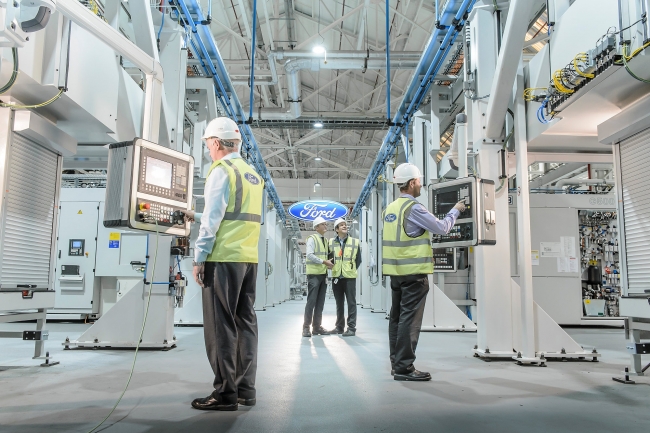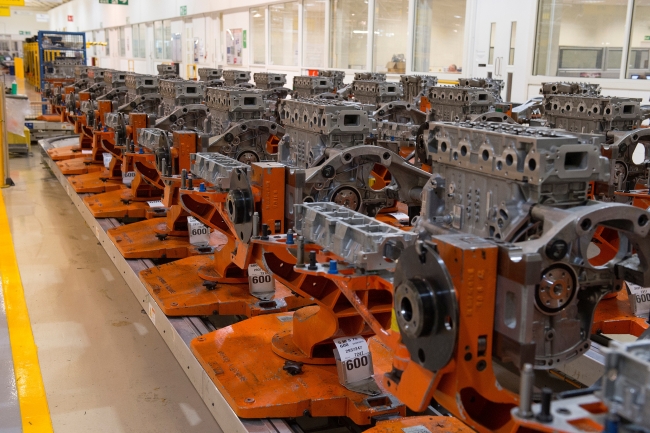3 minute read
Ford hits manufacturing emissions target 8 years early
In 2010, Ford’s Environmental Quality Office announced a goal – to reduce the company’s carbon dioxide emissions from manufacturing operations by 30 per cent per vehicle produced by 2025.
Ford has announced it has hit that target twice as fast as expected. The results are dramatic, with a global manufacturing CO2 emissions reduction of more than 3.4 metric tons from 2010 to 2017 – equivalent to greenhouse gas emissions from more than 728,000 passenger vehicles driven for one year.

Ford Motor Company has announced that it has achieved the company’s manufacturing emissions reduction goal eight years ahead of schedule / Picture: Ford Motor Company
Bruce Hettle, group vice president, manufacturing and labour affairs said: “We are proud of the work we have done to achieve this goal. We’ve made several improvements to our manufacturing operations – from the lighting we use to plant consolidations – all of which played a role in dramatically reducing our CO2 footprint.”
Ford reduced its emissions footprint through energy conservation and efficiency changes at Ford’s manufacturing facilities, such as installing more than 100,000 LED light fixtures and updating paint operations.
Andy Hobbs, director, environmental quality office, added: “Painting operations use a large amount of energy. Introducing technology that allows wet-on-wet paint application and eliminates a drying oven, in more plants has significantly decreased energy use while maintaining quality.”
Minimum Quantity Lubrication is another energy-reducing technology Ford has embraced. In MQL, a machining tool is lubricated with a very small amount of oil sprayed directly on the tip of the tool in a finely atomised mist, instead of with a large quantity of coolant/water mixture.
Ford isn’t stopping here however, and is now working on setting a new goal – this time, focused on renewable energy.
Hettle added, “We will continue to set ambitious goals and work to create innovative practices to achieve them. Our next strategy will focus on increasing Ford’s use of renewable energy while maintaining our energy efficiencies.”

Ford’s Dagenham plant, along with all other global production sites has reached the manufacturing emissions reduction goal / Picture: Ford Motor Company
Ford says it also remains focused on reducing vehicle emissions by doing its share to deliver on CO2 reductions consistent with the Paris Climate Accord. The company is charting its course for the future by investing $11 billion (£8.3 billion) to put 40 hybrid and fully electric vehicle models on the road by 2022.
Ford’s Sustainability Report highlights
The 2017-2018 Ford Sustainability Report highlights the automaker’s ongoing work to drive responsible business practices, including:
Mobility Solutions
In 2018, Ford launched a ground-breaking program in Jeddah, Saudi Arabia, with the help of Jeddah’s Effat University called Driving Skills for Life ‘For Her’. The first-of-its-kind program is focused on driving education for women, following the royal decree to lift the ban on females obtaining a driving license in the country. More than 250 students were among the first graduates – completing courses that teach vital skills necessary for new drivers, tips from highly skilled experts and a deep understanding of safe driving practices. This customised version of our award-winning program, Driving Skills for Life, empowers women to access greater mobility.
Electrification
In collaboration with BMW Group, Daimler AG, and Volkswagen Group with Audi and Porsche, Ford is one of the founders of IONITY, a pan-European joint venture to develop a fast-charging network for electric vehicles. Together, the goal of IONITY is to build 400 fast-charging stations in key European locations by 2020, with a charging capacity of 350 kW. This enables a significant reduction to charging times compared to existing systems. The build-up of 20 stations in multiple European countries began in 2017, with the first charging station in Germany becoming active in 2018. These efforts will support EV adoption, which will help to address climate change.
Products and Operations
In addition to reaching the company’s ambitious goal of reducing manufacturing greenhouse gas emissions with a 32 per cent reduction, Ford makes around 300 parts from renewable materials, with eight sustainable materials featured in production vehicles: soy, wheat, rice, castor, kenaf (hibiscus), tree cellulose, jute and coconut.
Ford’s Contribution to Society
Ford is committed to contributing to communities around the globe. In 2017, $63 million (£47 million) of charitable donations were made through Ford Motor Company Fund. More than 237,000 volunteering hours were donated by current and retired employees across more than 1,700 community projects in 40 countries. Dealers around the world additionally contributed more than $110 million and 50,000 hours to charitable causes, disaster relief efforts and non-profits in the communities they serve.
You can read the full report, by visiting: sustainability.ford.com.